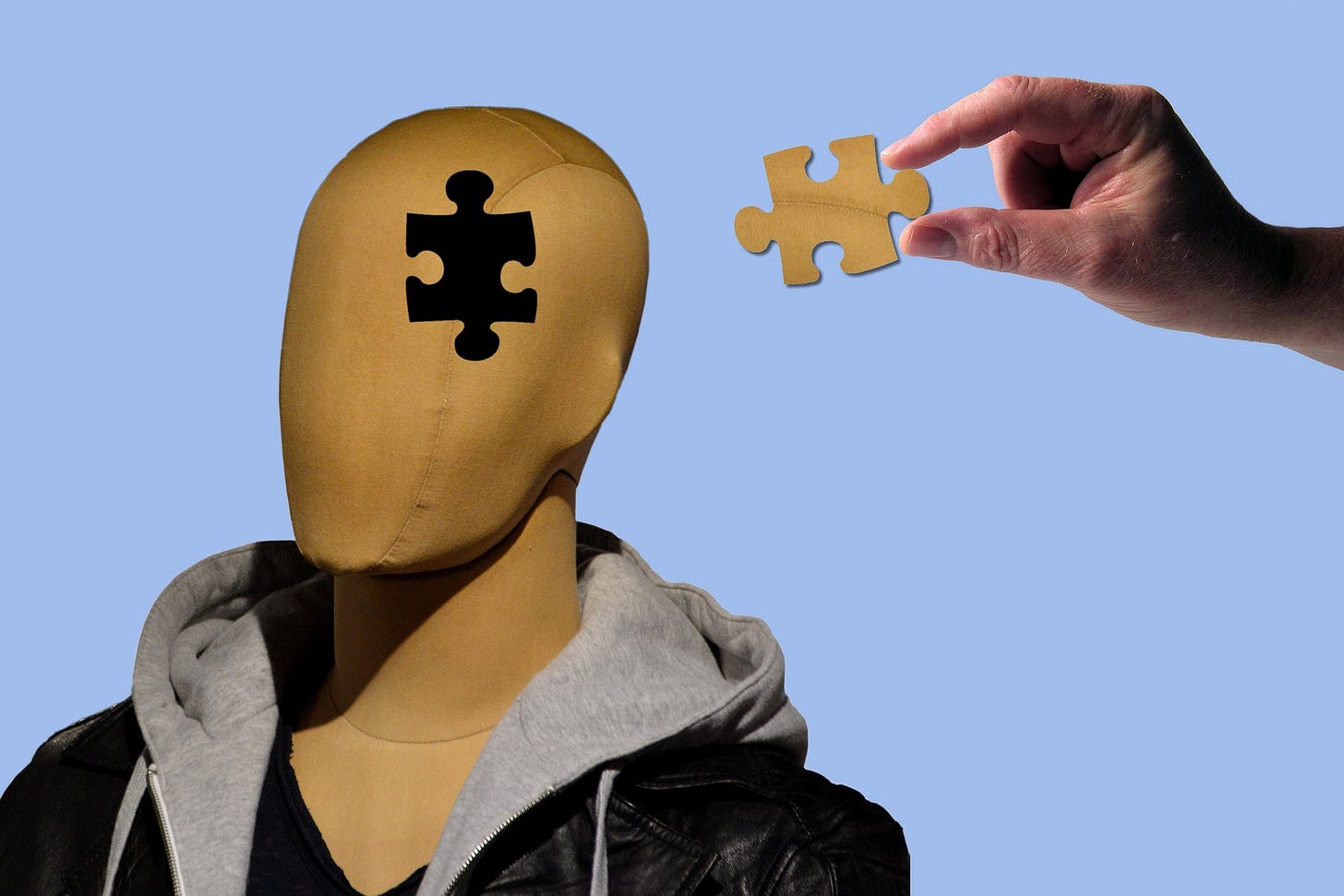“In the land of the blind, the one-eyed man is king.”― Desiderius Erasmus
Years ago I had the privilege of coaching the Tucker High School basketball team in their preseason strength and conditioning training to get the team ready for their competitive season.
The reason this opportunity had fallen into my lap was because I had previously worked with a few of their players on an individual level just a couple years prior when I had worked for another athletic performance training company before I had ventured out on my own to start my business.
Once I had decided to make the leap to stop working for the man and become self-employed I had searched up the Tucker coach’s contact number and quickly set up a meeting.
It was a very productive meeting because he had liked my tough approach from having worked with his previous players and as luck would have it he was frustrated with the direction of his team at the time I had sat down to meet with him.
In that meeting he was venting his frustrations to me about how his team lacked discipline, focus, work ethic, and structure. Coming from their head coach I was a bit concerned because in my mind the thought had occurred to me that if he, as the head coach, couldn’t provide discipline, focus, work ethic, and structure then being an outsider coming in would I be able to deliver this to the team and their situation?
As the first day of training approached I knew the only way to know this for sure was to put my skills to the test, but at least I had the advantage of knowing what I was walking into before the day came.
The team was large with 32 players consisting of both the boys and girls JV and Varsity squads and I had formulated a plan to accommodate these numbers and manage the group on my own.
I had made the choice to set up several different work stations each dedicated for the athletes to perform a different speed and agility drill, or a strength movement of some kind. Each station was timed and there were a total of eight stations which allowed for four athletes to work at each station at a time. As each group of athletes worked through and completed their given time at each station they would rotate over to the next station. It was a good setup that allowed for a seamless execution as I could manage 32 players on my own without help.
However, as good as the layout for the training session was, the head coach’s warning to me regarding the lack of focus of the group would still soon present itself to me as a problem. The only question was how was I going to deal with it?
A Lesson In The Human Psyche
As I blew the whistle to start the team into their training session I started watching over all of the group like a hawk. Even though I was a rookie in terms of being a new business owner I was still very experienced as a coach and had a few tricks up my sleeve for when things didn’t always go as planned.
As I sit here telling you that I remember I was only about three to five minutes into the training session when I noticed one of the lead varsity players at one of the work stations in the group joking around and putting in effort that was quite honestly pathetic.
I watched his group carefully because he was the top player on the team and as he was spending more time joking and goofing off this had a cascading effect that rippled throughout the rest of the entire team as a whole. You see whether he liked it or not his poor example of leadership and work ethic had a negative impact on the rest of the team.
This was a typical observation in how important leadership is with an individual as good leadership and bad leadership WILL absolutely have a direct impact on the performance of a team as a whole. This is very important to mention as this is true of any organization, especially when it comes to the government.
So you’re probably wondering Brandon what did you do?
Well, I watched them carefully for a few seconds and when I realized they were not going to correct themselves and start putting forth the necessary effort I blew the whistle and issued the first and only warning to the team. I could sense a bit of attitude in the star player’s body language with his response to my warning, but I chose to ignore it for the moment.
Since I was new I kept the criticism anonymous with my first warning, but with a stern tone told them clearly that I noticed a group at one of the work stations was goofing off. I warned them that if I had to blow the whistle again to stop training because there were players that were too busy playing around instead of being serious about their work ethic that the second event would involve a brutal lesson in discipline with what I referred to as mental drills (which were really physical drills I used to mentally discipline athletes).
So they acknowledged the warning and we started back with the training session. However, after a quick couple of minutes I looked over at the same player in the group that was goofing off before and as you can imagine he was doing it again.
At this point I was irritated and when I got irritated I had to correct the situation. I immediately blew the whistle and yelled for everyone to get in line formation for the mental drills I had literally just warned them about.
However, what I did next was something that the group found to be shocking and based on everyone’s facial expressions it completely caught them all off guard. As I ordered everyone in line for the mental drills I called for the player that had been goofing off to come to the head of the group to stand beside me. When I did so he looked stunned and then asked me why.
He walked to the head of the group and stood next to me asking me why I wanted him beside me while I was addressing the entire team? As I stood there I explained to him and the group that since he wanted to take it easy and preferred a more relaxed approach during the training while he was goofing around that he could continue to do so by relaxing while standing right next to me as the rest of the team suffered through doing their mental drills while he watched.
At this point I blew my whistle and started making the team do a tough series of bodyweight squats where I directed the execution of each repetition of squats by telling them when to squat. I kept an aggressive tempo and after about 20 or so squats they were clearly starting to experience the discomfort from the physical application of what I call mental drills.
As I started doing this an amazing thing happened as the superstar player standing next to me begged me to allow him to join them. At first I refused and asked him what had changed between the time he was goofing off and the moment he found the rest of his team in the middle of doing their mental drills?
Of course, he didn’t have an answer and just continued to beg me to allow him to join the rest of the group in their disciplinary punishment. By the way if this is new to you this is a normal cycle that coaches experience with kids and athletes, but just please stay with me because the punchline is coming up.
So you might be thinking Brandon what happened next?
Well, I pushed the group pretty hard with the disciplinary approach using the mental drills. I stopped the squats and ordered everyone to return to their work stations.
From that point on the group put forth a strong effort and we proceeded to finish out the workout, but at the end I blew the whistle to grab everyone’s attention and once again ordered them to get back in line the way we did to do the mental drills.
The look on their faces was misery and I could see it.
It was at this moment that I told them that despite the bumpy start to the workout that they demonstrated a level of grit and intestinal fortitude that made me take notice and that there was hope for all of them after all. Furthermore, afterwards I approached the young superstar player that had also shown a change in effort and attitude and completed the day’s workout on a positive note.
I pulled him and his small work group aside and asked him if he understood why I isolated him at the beginning of the mental drills I was forcing the entire team to go through? He looked at me and after a short pause he responded by saying that he believed I wanted to show him how his actions hurt the team.
This was an impressive response from this young man. I was very pleased to hear this and told him that I also knew that he was the one they all looked up to in the group. I told him that he was the one that the team would rely on if things got tough and that his kind of leadership wasn’t something that his head coach, or even I could replace.
I then told him that I couldn’t make this preseason conditioning venture a success without his leadership and example of hard work being on point. I told him and his small group that I couldn’t do it without them.
From that day forward I never had to raise a finger to discipline anyone else on the team because this star player would automatically step in to take the initiative to do it for me.
In case you’re wondering, that Tucker High School basketball team went on to win the state championship and we did it again the following year.
Deindividuation
Typically when you hear about someone using a tactic where psychological isolation is involved it is often viewed with a negative connotation. Typically such a tactic is employed by someone who has abusive motives such as one engaging in an act to isolate their spouse from others because they are jealous of their significant other, they’re insecure, they’re possessive, or they just totally lack any self-esteem themselves and are coping in a very negative way.
Whatever the reason when psychological isolation is employed it is typically explained in the context of using scenarios that involve negative and abusive situations. However, there are moments when isolating people in a group, as I explained with my own example with the basketball team, is a good thing. This is a different type of “isolation” that isn’t done at all in the same context as typical social situations involving what you would normally assume is psychological isolation.
Granted the way I isolated the young talented athlete in the group from my story was an isolation of his individuality. This ended up being effective because it was initiated with positive intention. This ended up resulting in a tremendously positive outcome when it came to his change of attitude and work ethic which not only elevated him, but ended up elevating his team as well.
So why did the young man fail to put forth the effort right out of the gate and feel that it was ok to simply goof around during the workout with the rest of the team instead of putting forth the effort?
Well the reality is that there were probably several reasons ranging from the fact that he might have lacked discipline, structure, and focus, but there’s also a touch of something else involved here when it comes to the psychology of group dynamics.
If you follow this podcast and blog then you know I also like to cross-post articles and other podcasts from the Substack platform with other talented creators. Just recently I did this with two former guests on my podcast with Kelli Russell and Jerry Kuykendall.
I cross-posted one of their episodes recently where they honed in on the important concept of Individuation. The title of that episode is Your Path To Individuation.
So going back to the explanation of why my talented basketball player experienced a moment where he felt he could choose to not put in the physical effort to do the work and instead goof around with his friends was because of a related concept known as deindividuation.
Deindividuation is obviously the opposite of Individuation and it’s a phenomenon that is typically associated with people that engage in behavior out of the norm when inside a large group.
This phenomenon is typically associated with violent or deviant behavior when looking at how individuals might act during a riot when they are hidden within a large crowd. Granted my young basketball player here wasn’t a deviant in the least, but the larger point is that the group dynamics provided a platform for him, like with many kids among many teams, to sometimes feel hidden within the large groups enabling them to sometimes detract from disciplinary activities. This is due to the fact that they feel they will be less likely to be identified within the group.
As a result this causes some people who fall for deindividuation to be more likely to engage in behavior and to do things that they might not normally do if they were on their own, or in a position where people could easily know who they are in a given situation.
This concept of deindividuation was first coined by American social psychologist Leon Festinger in the 1950’s in order to describe situations in which people cannot be individuated or isolated from others. (Source: Britannica) Obviously I wasn’t going to allow that to happen on my watch with my star basketball player in the group, but I digress.
However, in some instances deindividuation can be rather inconsequential such as letting loose on the dance floor or within the dynamics of helping people. Remember that the context of any given situation matters and there are circumstances that do vary with any given situation.
However, the larger point here is to make sure that we are all more capable of being a Zenith by being able to bring more clarity to any given circumstance because when we don’t, as society, we often find ourselves in a sort of enigmatic societal dilemma when looking at how certain negative events may play out in society when deindividuation does actually manage to occur in a dangerous setting.
A few examples here would involve the continuous summer riots that have popped up with the likes of Antifa and BLM over the past few years. In these circumstances I understand much of those riots were artificially manifested as these groups were organized and paid for, but they can fuel some instances of deindividuation when it comes to looters and others who might want to take advantage of an opportunity to not be held accountable for their actions.
If you don’t believe me, in 19th century France the work of Gustave Le Bon demonstrated and promulgated a politically motivated criticism of crowd behavior. (Source: Britannica)
Le Bon’s work referred to group behavior as irrational and fickle and it got much support at the time given the many riots that were going on during his time in France. He pointed out that undesirable behaviors would occur at the time through three types of mechanisms.
First, the feeling of anonymity gives people the sense of being free from being isolated or identified, second this would lead to a feeling of being untouchable and ultimately this would result in a complete loss of personal responsibility altogether.
Now I want to go back and touch on my example of the artificial and paid rioters influencing others in La Bon’s example here of the complete loss of personal responsibility. Within the group dynamic this could also cause a phenomenon which La Bon referred to as a contagion which pretty much means what it sounds like. In this circumstance a contagion would dangerously spread through the rest of the crowd as they can start thinking and acting in the same manner. According to Le Bon it’s also at this point where the crowds are more suggestible.
In my observation this is precisely what happened to the world within the group dynamics of the pandemic policies and the Mass Formation that took place with so many people that were acting hostile and violently towards those of us who refused to go along with the theater and the relentlessly suggestive narrative of compliance.
However, unlike the environment in 19th century France it’s my observation that this group deindividuation was more perpetuated through the digital platforms of social media more so than the concrete streets of France or New York.
After all, in the same light as Le Bon and Festinger point to in their respective theories the same sort of deindividuation coupled with the feeling of being untouchable was enabled by many people willingly attacking their friends and family during the pandemic through the comfort of their electronic devices on social media.
The Mass Formation that corrupted and is still infecting our society was also further perpetuated with the social media Oligarchs censoring dissident voices that went against the suggestive narrative of compliance that directly fueled the deindividuation throughout our society at large.
After all, according to the American Bolsheviks (aka Communists) you should NEVER attempt to do your own research and should just Follow the $cience.
Remember that deindividuation occurs in the Mass Formation. If you’re not already aware, the concept of Mass Formation is a harrowing phenomenon that has a shocking historical context that the world renown Professor of Psychology Mattias Desmet discusses and is also a mind blowing topic on an episode that I covered back last Halloween. You can check out that episode here titled Defeating The Fear Control Mechanism: How Stoicism and Strength Combat Weakness and The Infantilization of Society. By the way Mattias Desmet himself gave that episode a like on the Substack so you want to make sure you check it out if you haven’t already.
The Wrap Up
In my observation it’s clear to me that deindividuation is something that the Administrative State Media (ASM) has also managed to foster across much of our society. As the ASM floats a narrative, regardless of how big the lie is, many people with a warped sense of reality will use that narrative as a sort of blanket for them to avoid accountability.
After all, if we use the behavior we witnessed with Mass Formation during the pandemic you saw many people both on and offline abusing and fighting with family and so-called friends.
Many of those that were following along and advocating for the suggestive narrative of compliance were ruthless in their demands. This resulted in many people being “othered,” it resulted in people losing their jobs, losing their family members, and most importantly it served as a Trojan Horse for ushering in the widespread Communism and corruption throughout every major United States institution as we’re seeing play out right now in front of our faces nearly every single day.
I told you that story about my experience with the Tucker High School basketball team to communicate a larger point. In case you didn’t know, in that Tucker High School environment I was the minority. Not that it mattered to me because as an individual, a coach, and a professional I always treat everyone the same. That’s how I was raised.
However, had I been fake, disingenuous, or simply scared to discipline any of the players on that day, or any day for that matter, I would have never been able to overcome the deindividuation at that moment with that star player.
The circumstance had presented the perfect opportunity for me to seize by isolating that player from his team and making him realize that he was doing that prior to me when he had made the decision to joke around instead of doing the work.
However, when I showed him he could see with clarity and he took his team to the next level. I tell you this because if you’re listening and paying attention to what’s going on in the world with the indictment of the former president, as well as his cabinet members. Additionally as you see what’s happened in East Palestine, Ohio and Maui and how the ASM is covering for the malfeasance and incompetence, and you’re seeing the ASM now starting to float more stories with the suggestive narrative of compliance with more COVID policies, masking, etc. you’re also going to see the Mass Formation of more deindividuation within our society kickoff once again.
Now that you have this knowledge you shouldn’t be confused and view these circumstances as sort of an Enigmatic Societal Dilemma, but rather view what's happening with absolute clarity.
Furthermore, as you see the Mass Formation and deindividuation start up on your social media feeds and within your social circles you’re now going to find yourself in a similar situation as I did with that Tucker High School basketball team and whether or not you should call out and isolate those trying to perpetuate an abusive and suggestive narrative of compliance.
If you’re worried and find yourself in a similar situation and you’re concerned because you’re outnumbered just remember that I was outnumbered 32 to 1.
I hope you enjoyed today’s article/podcast.
If so I hope you would choose to support this platform as part of the patriot economy as well. Be an Emissary of Freedom and help to push this piece out to your friends, family, and coworkers.
In order for BOTH you and me to influence and strengthen our society we must not stay idle so please make sure you hit the subscribe and share buttons here below.
Spreading messages like this one is how we influence our culture and I need your help in order to do it.
Also listen to this episode here on…
If you like this podcast and the message please take a moment to give it a Five Star ⭐️⭐️⭐️⭐️⭐️ rating on the Spotify platform.
Also to connect with me please make sure you join me here on Twitter, Facebook, GETTR, and now Substack’s new social media called Notes.
Stay strong. Stay focused. Stay active.

















Share this post